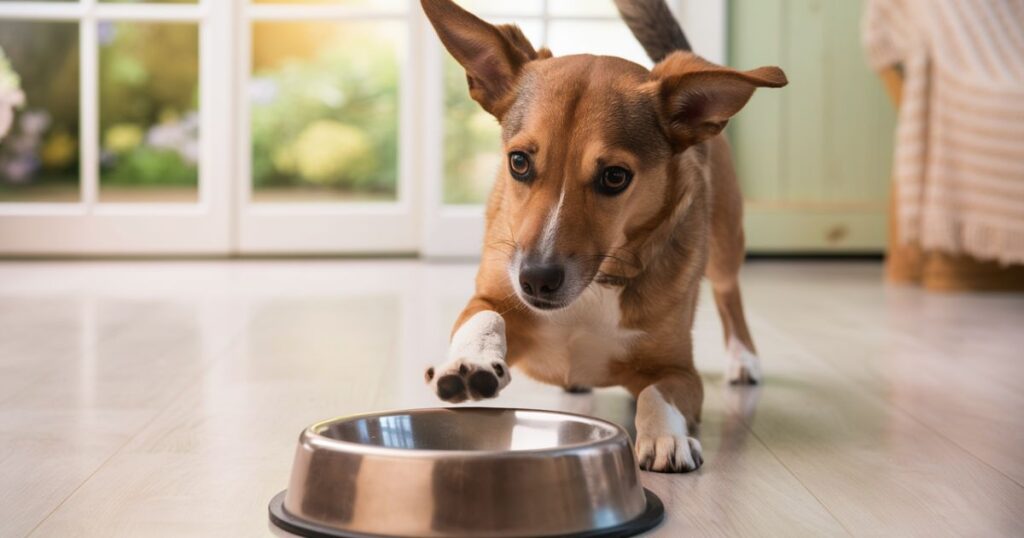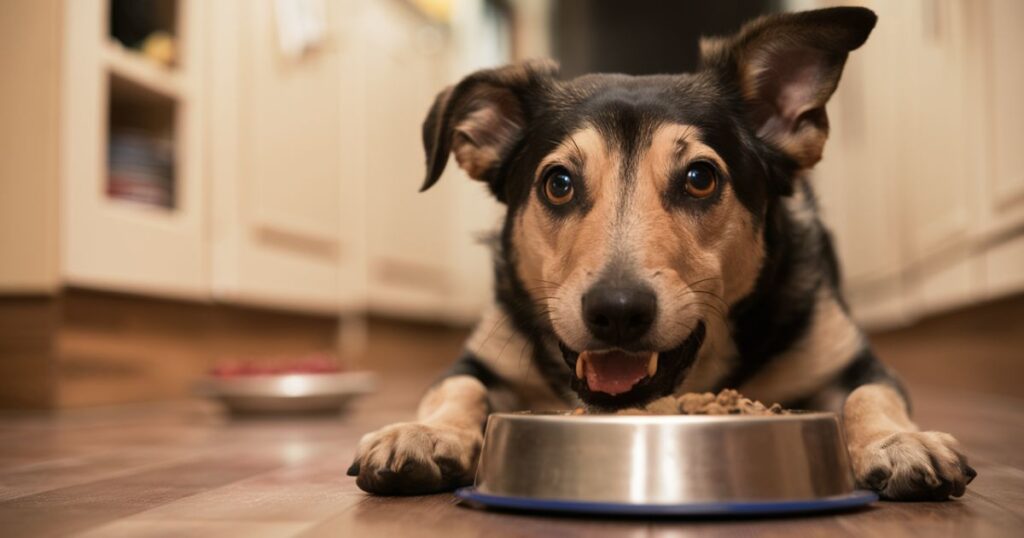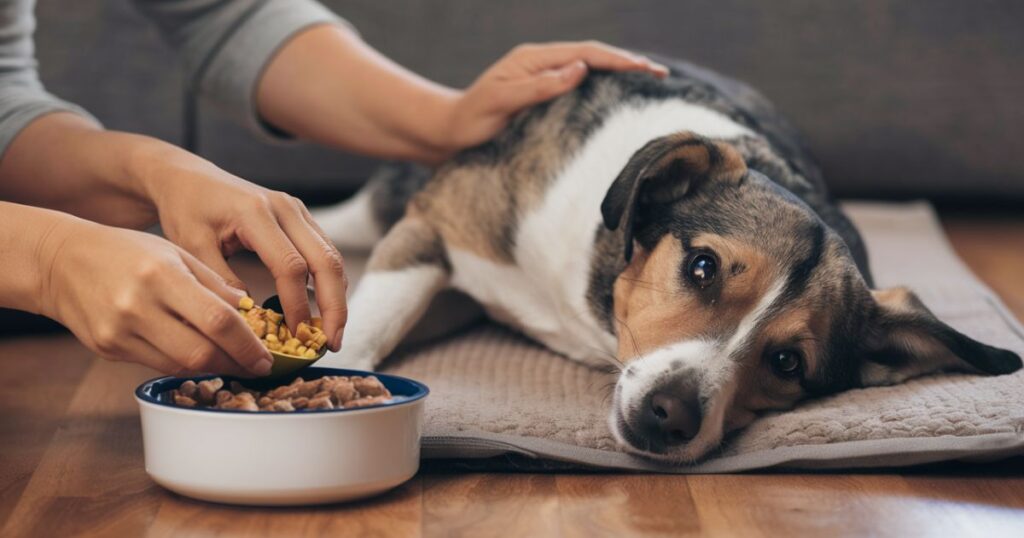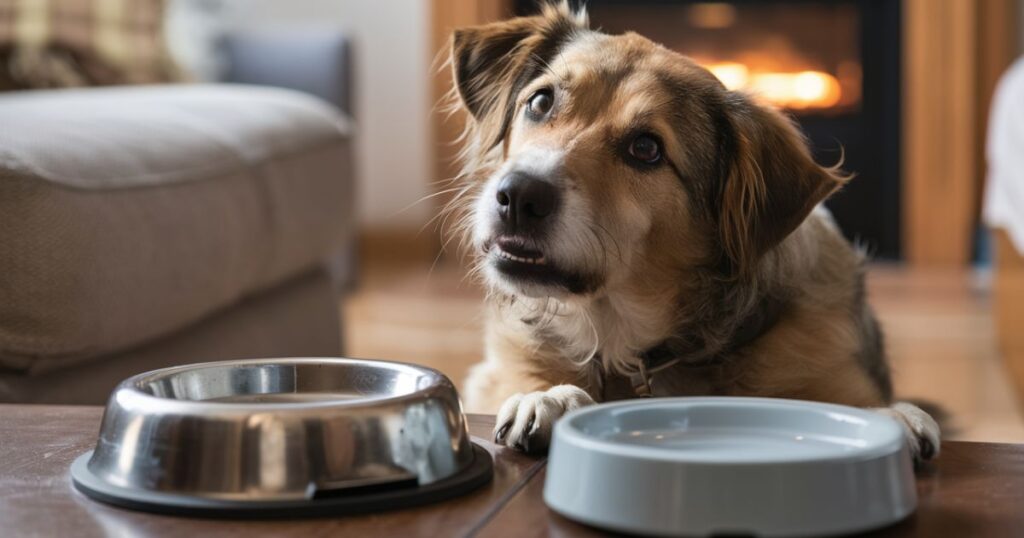Watching your beloved pup refuse their food bowl can be a heart-wrenching experience for any dog owner. When our furry friends stop eating or drinking, it’s only natural to feel worried and wonder what could be causing this lack of appetite.
The truth is, a dog’s refusal to eat or drink can stem from a variety of reasons, ranging from simple picky eating habits to more serious underlying medical conditions.
In this comprehensive guide, we’ll explore the Dog not eating or drinking? inappetence and provide valuable insights on when it’s time to seek professional veterinary care.
Why is my dog not eating or drinking?
My dog won’t eat or drink and just lays there. A dog’s loss of appetite or thirst can generally be attributed to one of three main categories: medical issues, behavioral factors, or environmental changes. Let’s delve into each of these potential causes in more detail.
1. What causes a dog to stop eating?

When it comes to medical reasons for a dog’s refusal to eat, the possibilities are numerous. Here are some common culprits:
- Gastrointestinal issues, including upset stomachs, nausea, or other digestive disorders like inflammatory bowel disease (IBD)
- Dental problems, making it painful or difficult for your dog to chew food
- General pain or discomfort anywhere in the body, such as arthritis or injuries
- Parasitic infestations, such as worms
- Illnesses causing fever, infection, or inflammation
- Food allergies or sensitivities
- Ingestion of toxic substances or foreign objects, potentially leading to an intestinal blockage
- Medication side effects
- Chronic conditions like kidney disease, liver disease, diabetes, or cancer
It’s essential to remember that loss of appetite can be a common symptom of many illnesses in dogs. Just like humans, when our furry companions are feeling under the weather, their desire to eat often diminishes.
Read More : What Should You Do If A Dog Is Displaying Concerning Body Language?
2. Possible medical reasons why dogs stop eating
Here is a bulleted list of potential medical issues that could contribute to a dog’s loss of appetite:
- Upset stomach or nausea from any cause
- Dental problems making it painful to chew
- Pain or discomfort anywhere in the body
- Parasitic infestations like worms
- Illnesses causing fever, infection, or inflammation
- Food allergies or digestive disorders like IBD
- Ingestion of toxic substances or foreign bodies leading to an obstruction
- Medication side effects
- Underlying chronic diseases (kidney disease, liver disease, diabetes, cancer, etc.)
While this list is not exhaustive, it highlights some of the most common medical reasons why a dog may stop eating. Prompt veterinary attention is crucial to rule out any serious health issues and provide appropriate treatment.
3. Possible behavioral reasons your dog isn’t eating
In addition to medical factors, emotional and behavioral issues can also play a role in a dog’s loss of appetite. Stress, anxiety, and fear are common culprits that can lead to inappetence in our canine companions.
Changes in routine or environment, such as introducing new people or pets into the household, relocating, or even something as simple as altering the time or location of their meals, can trigger anxiety and stress in dogs.
Particularly in senior pets who tend to be more sensitive to such disruptions. If your dog’s lack of appetite is primarily caused by behavioral issues or stress, you may notice them regaining their appetite once they’ve adjusted to the new circumstances.
If anxiety or fear persists, it may be necessary to seek professional help from a veterinary behaviorist or consider medication to help your furry friend cope.
4. Possible environmental reasons your dog isn’t eating or drinking

Sometimes, the reason behind your dog’s refusal to eat or drink can be as simple as an environmental factor. Here are a few common scenarios:
- New Food Aversion: If you’ve recently transitioned your dog to a new type of food, they may dislike the taste or find it difficult to adjust, leading to a temporary loss of appetite. In such cases, it’s crucial to slowly introduce the new food by gradually mixing it with their previous diet over the course of several days or even weeks.
- Mealtime Intimidation: Dogs, especially those living in multi-pet households, may avoid their food bowls if they feel intimidated or uncomfortable eating in close proximity to their housemates. Separating feeding areas or providing individual spaces for each pet can help alleviate this issue.
- Rapid Dietary Changes: Abruptly switching your dog’s diet without a proper transition period can lead to gastrointestinal upset, which may cause them to refuse food temporarily. Always consult with your veterinarian for guidance on how to safely transition your pet to a new diet.
5. Is your dog drinking, but not eating?
In some cases, you may notice your dog drinking water but refusing to eat solid food. This scenario could indicate nausea, mouth pain, or other issues that make the act of chewing or swallowing difficult or unappetant.
While maintaining hydration is a positive sign, it’s still crucial to seek veterinary attention if your dog’s lack of appetite persists beyond 24 hours, even if they are drinking water. Prolonged inappetence can lead to potential complications, such as nutrient deficiencies or other health issues.
How to identify the underlying cause and address the issue of dog not eating
It’s important for dog owners to watch their dog’s behavior and notice any changes, like not eating or drinking. This helps you and your vet figure out why your dog isn’t eating or drinking.
Check your dog’s mouth for dental problems, like damaged teeth, red or bleeding gums, or signs of infection. Watch your dog’s bowel movements for diarrhea or constipation and see if they are peeing even without drinking water.
If your dog seems tired and less active, they might be sick, especially if their ears and paws feel hot, which could mean they have an infection. Also, think about any changes in their environment that might be stressing them out.
If your dog loses their appetite, it’s very important to talk to a vet to check for any medical issues and get advice on helping your dog eat and drink again.
What causes a dog to stop drinking?
While it’s less common for dogs to stop drinking water altogether, it can happen in certain situations. One potential reason could be related to the introduction of wet or high-moisture foods into their diet, which may temporarily reduce their need for supplemental water intake.
If your dog is displaying a simultaneous decrease in both food and water consumption, it could be an indicator of an underlying health issue that requires prompt veterinary attention, especially if accompanied by other concerning symptoms like vomiting or lethargy.
What to do when your dog won’t eat or drink
If your dog has stopped eating or drinking for more than 24 hours, it’s crucial to seek professional veterinary care. Prolonged inappetence and dehydration can lead to serious complications, especially in puppies, senior dogs, underweight animals, or those with pre-existing health conditions.
The Juno app offers a convenient way to connect with a virtual care team who can help you determine the urgency of your pet’s situation and provide guidance on whether an immediate veterinary visit is necessary or if it’s safe to monitor their condition at home for a short period.
If your dog exhibits any of the following symptoms alongside their lack of appetite or thirst, it’s advisable to seek immediate veterinary attention:
- Vomiting or diarrhea
- Lethargy or listlessness
- Fever
- Rapid weight loss
- Suspected ingestion of toxic substances or foreign objects
- Pre-existing medical conditions or compromised immune systems
Prompt medical intervention is crucial in these cases to prevent further complications and address the underlying cause of your dog’s inappetence.
What’s the treatment for a dog not eating or drinking?

Once you’ve sought professional veterinary care for your dog’s lack of appetite or thirst, the treatment plan will typically involve two main components: identifying and addressing the underlying cause, and providing supportive care to help your furry friend feel better and prevent potential complications.
1. Figuring out why your dog’s not eating or drinking
Your veterinarian will start by gathering a thorough medical history and performing a comprehensive physical examination on your dog.
Depending on their findings and your pet’s specific symptoms, they may recommend various diagnostic tests to help pinpoint the root cause of the problem. These tests may include:
- Fecal examination to check for parasites
- Blood work and urinalysis to evaluate organ function and detect potential infections or metabolic imbalances
- Imaging studies, such as X-rays or ultrasounds, to visualize internal organs and structures
- Additional specialized tests, like biopsies or infectious disease screenings, if deemed necessary based on your dog’s clinical presentation
By conducting a thorough diagnostic workup, your veterinarian can accurately identify the underlying medical condition, behavioral issue, or environmental factor contributing to your dog’s inappetence and develop an appropriate treatment plan.
2. Treatment and supportive care for your dog
Once the cause of your dog’s lack of appetite or thirst has been identified, your veterinarian will devise a comprehensive treatment strategy tailored to their specific needs.
This may involve addressing the root cause directly, such as prescribing deworming medication for parasitic infestations, providing pain relief for dental or musculoskeletal issues, or initiating targeted therapy for underlying chronic conditions.
Supportive care measures will be implemented to help your dog feel better, prevent further complications, and promote healing. These may include:
- Anti-nausea medications: To alleviate nausea and vomiting, which can contribute to inappetence.
- Appetite stimulants: Medications or supplements designed to encourage appetite and increase food intake.
- Pain relief: Appropriate pain management strategies to alleviate discomfort that may be contributing to your dog’s refusal to eat.
Here’s a continuation of the blog post:
- Fluid therapy: Intravenous or subcutaneous fluid administration to combat dehydration and maintain proper hydration levels.
- Special diets: Your veterinarian may recommend a temporary change in diet, such as a highly palatable or easily digestible food, to encourage your dog’s appetite and support their recovery.
- Feeding techniques: Strategies like hand-feeding, warming food to enhance aroma, or offering favorite treats can sometimes entice picky eaters or dogs struggling with inappetence.
It’s crucial to follow your veterinarian’s instructions carefully and never attempt to self-medicate your pet with human medications or supplements without professional guidance, as many substances can be toxic or harmful to dogs.
In cases where behavioural or environmental factors are contributing to your dog’s lack of appetite, your veterinarian may recommend specific behavior modification techniques, environmental enrichment strategies, or anti-anxiety medications to help alleviate stress and promote a healthy appetite.
FAQs
Q. I’ve heard home-cooked food is better for dogs who won’t eat. Can I feed my dog homemade food?
While home-cooked diets can sometimes be more appealing to picky eaters, it’s essential to consult with your veterinarian before making significant dietary changes. Ensuring a balanced and complete nutritional intake is crucial for your dog’s overall health, and homemade diets can be challenging to formulate correctly without professional guidance.
Q. How long can a dog go without eating or drinking?
Most healthy dogs can survive without food for three to five days, but it’s crucial to understand that prolonged inappetence can lead to serious complications, especially in puppies, senior dogs, underweight animals, or those with pre-existing medical conditions.
Q. Should I force-feed my dog if they won’t eat?
Force-feeding your dog is generally not recommended, as it can be stressful and potentially dangerous for both you and your pet. If your dog is refusing to eat, there may be an underlying medical reason that requires professional diagnosis and treatment.
Conclusion
A dog’s refusal to eat or drink can be a concerning and distressing situation for any pet owner. By understanding the potential causes and knowing when to seek professional veterinary care, you can take proactive steps to ensure your furry friend’s health and well-being.
Remember, prolonged inappetence or dehydration can lead to serious complications, so it’s crucial to monitor your dog’s food and water intake closely. If they dog not eating or drinking water in over 24 hours, or if you notice any concerning symptoms, don’t hesitate to reach out to your veterinarian or utilize resources like the Juno app for guidance.
With prompt medical attention, a proper diagnosis, and an appropriate treatment plan tailored to your dog’s specific needs, most cases of inappetence can be resolved, and your beloved companion can regain their healthy appetite and thirst.







